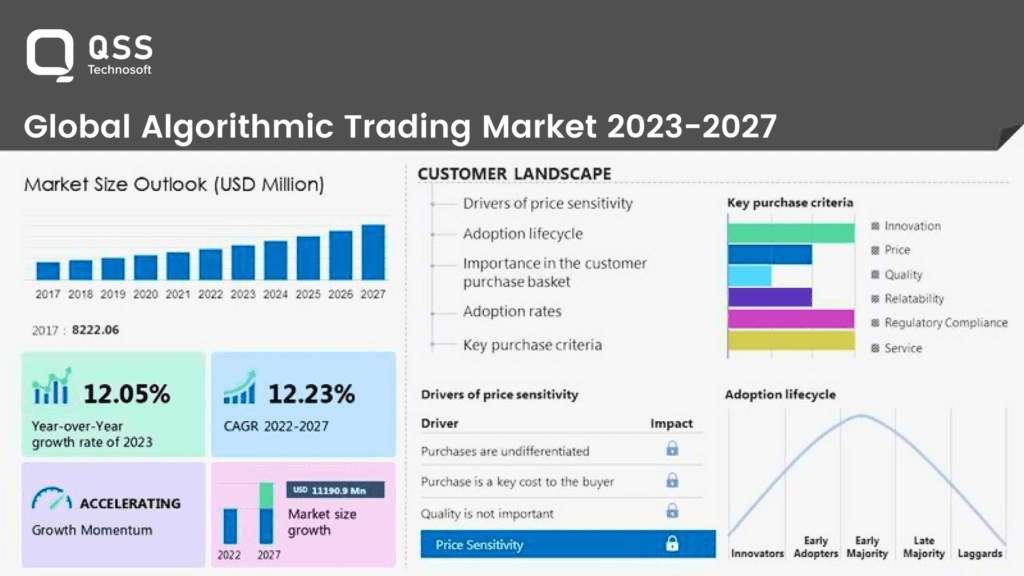Is your enterprise nonetheless counting on outdated systems and processes for stable transactions? It’s time to discover the revolutionary ability of the private blockchain technology era. With its decentralized and transparent nature, blockchain is remodelling various industries and paving the manner for a new technology of stable transactions.
Did you know that public blockchains like Bitcoin and Ethereum have gained significant popularity? These open networks permit all of us to participate and affirm transactions, ensuring transparency. However, they may not constantly be suitable for agencies that require more suitable safety and privacy.
That’s where private blockchains come into play. Private blockchains provide groups with the capability to customize their network, control, get admission to, and maintain certain confidentiality. These closed networks permit the handiest authorized individuals to enrol, making them ideal for industries which include healthcare, finance, and supply chain control.
According to a recent study by IDC, 65% of global organizations have already adopted blockchain technology by 2023. This mind-blowing statistic similarly emphasizes the developing importance of blockchain in revolutionizing numerous industries.

For instance, let’s consider the healthcare industry. With a private blockchain network, healthcare providers can securely and efficiently share patient information across different organizations while maintaining data privacy. This ensures better coordination of care, reduced duplication of tests, and improved patient outcomes.
Why Private Blockchain is Important For Businesses?
Private blockchains have gained significant attention in the business world as a powerful tool for streamlining operations and enhancing security. Lets explore why private blockchains are important for businesses and the benefits they offer.
Immutable and Transparent Ledger
- Private blockchains use a distributed ledger technology that ensures immutability and transparency.
- All participants on the network have a copy of the ledger, which eliminates the need for third-party intermediaries to verify transactions.
- Examples of industries benefiting from immutable and transparent ledgers include supply chain management, auditing, and financial institutions.
Enhanced Security and Control
- Private blockchains offer enhanced security as they are permissioned networks, where participants are carefully selected.
- The cryptographic consensus mechanism ensures that transactions are secure and tamper-proof.
- Businesses can maintain control over their data and decide which participants have access to it.
- For instance, healthcare organizations can securely share patient data within their own private blockchain network.
Cost Reduction and Efficiency
- Private blockchains have the potential to reduce costs and increase operational efficiency.
- By eliminating the need for intermediaries, businesses can save time and resources.
- Automation of certain processes can further enhance efficiency.
- For example, in the real estate industry, private blockchains can streamline property transactions by automating the verification process.
Smart Contracts and Automation
- Private blockchains can employ smart contracts, which are self-executing agreements with predefined rules.
- Smart contracts automate processes and reduce the need for manual intervention.
- For supply chain management, smart contracts can automatically trigger payments once certain conditions are met.
Data Privacy and Compliance
- Private blockchains offer businesses a solution to protect sensitive data and ensure compliance with regulations.
- By leveraging encryption techniques, private blockchains can keep data private and secure.
- Industries handling personal and financial data, such as banking or insurance, can immensely benefit from private blockchains.
As more organizations recognize these benefits, private blockchains are increasingly becoming a vital component of their digital transformation strategies.
How to Create a Private Blockchain for Enhanced Security
Below we are enlisting important steps that will help to create a private blockchain for enhanced security. So, make sure to read till the end.

Step 1: Define the Purpose and Requirements
Before creating a private blockchain, define the purpose and requirements of your network. Determine the specific use case you want to address, the level of privacy and security needed, and the participants who will be part of the network. Consider factors such as the number of participants, types of transactions, frequency of transactions, and data storage requirements.
Examples
- Healthcare industry for secure sharing of patient health records
- Supply Chain industry for secure tracking of goods
Step 2: Choose the Right Blockchain Platform
Next, Select a blockchain platform that aligns with your requirements. Private blockchain platforms offer more customization than public blockchains, and some examples include Hyperledger Fabric, Corda, and Quorum. Consider factors such as scalability, privacy features, and developer community support when selecting a platform. Evaluate each platform based on its ability to meet your network’s requirements.
Read Also : Blockchain development Security: Is It Safe to Use Distributed Ledger Technology?
Examples
- Hyperledger Fabric: A modular blockchain platform that provides high levels of confidentiality and scalability. It uses sophisticated consensus mechanisms to ensure agreement among participants in the network.
- Corda: A blockchain platform that emphasizes confidentiality, with each participant having a copy of the ledger. It also provides automation through smart contract functionality.
- Quorum: A permissioned Ethereum fork that offers enhanced privacy by removing certain public details from transaction data. It also uses a consensus mechanism that is more suited to enterprise use.
Step 3: Set Up a Network Consensus Mechanism
Consensus mechanisms ensure agreement among participants in a private blockchain network. Depending on your requirements, choose a consensus mechanism that fits your needs. Some common consensus mechanisms include Proof of Work (PoW), Practical Byzantine Fault Tolerance (PBFT), and Delegated Proof of Stake (DPoS). Implement the chosen consensus mechanism in your private blockchain network.
Examples
- Practical Byzantine Fault Tolerance (PBFT): This consensus mechanism involves a known set of participants within a private network. Each node can communicate to every other node, and they agree in the order of transactions.
- Delegated Proof of Stake (DPoS): This consensus mechanism uses stakeholders who vote for block producers. The block producers then create blocks, and the stakeholders commit transactions and validate the blocks.
Step 4: Create the Network’s Architecture
Design the architecture of your private blockchain network by defining the various components and their interactions. This typically includes identifying the nodes, establishing communication channels, and setting up the necessary infrastructure. Consider factors like scalability, fault tolerance, and security when designing the network architecture.
Examples
- Nodes: Identify the number of nodes required for the network
- Communication Channels: Define the channels of communication between nodes
- Infrastructure: Determine the necessary hardware and software requirements
Step 5: Define Access Control and Permissions
One of the key advantages of private blockchains is the ability to control access and permissions. Determine who can participate in the network, create new blocks, validate transactions, and access sensitive data. Implement access control mechanisms, such as cryptographic keys, to ensure only authorized participants can perform specific actions on the network.
Examples
- Participants’ Roles: Define the roles of participants in the network, such as administrators, validators, and auditors
- Cryptographic Keys: Set up cryptographic keys to restrict access to sensitive data
- Governance Model: Establish a governance model to enforce access control and permissions
Step 6: Develop Smart Contracts or Chaincode
Smart contracts or chain codes allow you to define the logic and rules of your private blockchain network. Depending on the chosen blockchain platform, you may need to develop smart contracts using programming languages like Solidity or chain code using languages like Go. Smart contracts enable automation and enforce business rules within the blockchain network.
Read Our Guide : Your Guide to Develop Blockchain Wallet Apps
Examples
- Solidity: A programming language used for smart contracts on the Ethereum blockchain
- Go: A programming language used to write chain code for Hyperledger Fabric
Step 7: Establish Security Measures
Enhancing security in a private blockchain is of utmost importance. Implement security measures like encryption, secure key management, and data immutability to protect the integrity of the network. Regularly audit and test the security of your private blockchain network to identify and address any vulnerabilities.
Examples
- Encryption: Use encryption techniques to protect sensitive data and communication
- Secure Key Management: Ensure that cryptographic keys are stored securely
- Data Immutability: Ensure that the data on the network remains unchanged and secure
Step 8: Deploy and Test the Private Blockchain Network
After completing the development of the private blockchain network, deploy it on the selected blockchain platform. Test the network’s functionality, performance, and security features to ensure it meets your business requirements. Conduct comprehensive testing and resolve any issues or bugs before moving to production.
Examples
- User Acceptance Testing (UAT): Conduct testing with end-users to ensure that the network meets their requirements
- Load Testing: Test the network’s scalability and performance under various loads
- Security Testing: Test the network’s security features and identify any vulnerabilities
Step 9: Continuous Monitoring and Maintenance
A private blockchain network requires continuous monitoring and maintenance to ensure its smooth operation. Implement monitoring tools to track the network’s performance, detect any anomalies, and prevent potential attacks. Regularly update and patch the network’s components to address any vulnerabilities discovered.
Examples
- Monitoring Tools: Implement monitoring solutions to track the network’s performance and detect anomalies
- Patch Management: Ensure that the network’s components are up-to-date with the latest security patches
- Incident Response Plan: Establish an incident response plan to address any security incidents
Step 10: Educate Participants and Maintain Governance
Educate the participants of your private blockchain network on its capabilities, functionalities, and security practices. Clearly define the governance model for your network, including decision-making processes and dispute resolution mechanisms. Regularly communicate updates and changes to ensure all participants are aware and aligned with the network’s rules and protocols.
Examples
- Training: Provide training to participants on the network’s functionalities and security practices
- Governance Model: Define the decision-making processes and dispute-resolution mechanisms for the network
- Communication Plan: Establish a communication plan to keep all participants of the network updated on changes and updates
Conclusion
Implementing a private blockchain network is a crucial move for businesses aiming to use the advantages of blockchain technology while safeguarding sensitive information. By following the step-by-step guide provided, you can successfully construct and deploy your private blockchain network with enhanced security and privacy.
Still in doubt? Don’t worry! At QSS Technosoft, we specialize in blockchain development and provide customized solutions to suit your specific requirements. Our team of experts possesses the knowledge and experience to guide you through each phase of building your private blockchain network, ensuring its successful implementation.
Contact us today to discover how we can help you effectively use the power of blockchain technology while prioritizing security and control.
We are proud to mention that our work has been recognized by leading B2B reviews and research platforms like GoodFirms, Clutch, MirrorView, and many more.
















